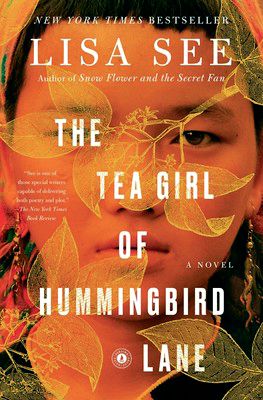The Tea Girl of Hummingbird Lane
Author: Lisa See
Price: US $16.99
Paperback, 400 pages
Published by Scribner Books

LISA See is the New York Times bestselling author of Snow Flower and the Secret Fan and many other popular books. Her new novel, The Tea Girl of Hummingbird Lane, soon topped the newspaper’s list of bestsellers after its publication in 2017 by Scribner Books and was reprinted in April 2018. More than 1,500 readers have written their reviews on the online platform of Amazon and Goodreads after reading the book.
It narrates a story of tea farmers who plant Pu’er tea in Yunnan Province. In the 1980s, in a remote mountain village, Li-yan and her family aligned their lives around the seasons and the farming of tea. For the Akha people, ensconced in ritual and routine, life goes on as it has for generations.
Struggling alone, Li-yan became the only person who can speak Mandarin Chinese in the village. As China’s reform and opening-up rolled out, businessmen from Hong Kong managed to reach the mountainous area of Yunnan where they discovered the traditional Pu’er tea. Li-yan seized the opportunity with the villagers and became a female entrepreneur in tea business.
To write the long novel, Lisa See interviewed businessmen in the U.S. who engaged in tea trade with China and paid several visits to Yunnan where she got the first-hand knowledge about Pu’er tea and its trade. For this reason, the book has been regarded as a biography for Pu’er tea farmers in Yunnan.
The story spans over a period of more than 30 years, the most important period of time for the development of the Chinese tea industry.
China’s rural land contracting started in 1978. Farmers have since then acquired the management rights of the land assigned to them accroding to the head count of their respective households. However, the barren land of Li-yan’s hometown for tea plantation is not suitable to grow other crops, and because of the inconvenient transportation and geographical condition, planting tea was an arduous and low-paid job that few people would choose. In striking contrast with the earth-shaking changes that happened in other parts of the country, Li-yan’s village didn’t even have access to electricity in the late 1980s and the poor had no adequate food and clothing.
In the 1990s, newly-built private tea enterprises mushroomed everywhere and foreign investors were allowed to enter the tea market. Businessmen and tea raters from Hong Kong and Taiwan appeared in the tea production areas. The Pu’er tea from ancient big trees in Yunnan, because of its scarcity and uniqueness, became hotly sought-after consumer goods. Every year, during the harvest season, tea businessmen would stay in the mountainous area to oversee the whole process from picking and processing tea leaves to packing and delivering them to many places around the world. Farmer’s income thereby increased along with their living standards.
However, the skyrocketing prices enticed dealers into stockpiling tea and waiting for a much higher price. Pu’er tea thus became rare resource that distributors and consumers all scrambled for. Li-yan’s company overlooked the supervision of product quality and soon a large number of defective tea leaves flowed into the market. The fake tea was exposed by the media which consequently led to a plummet in tea leaf prices.
Again, villagers fell into poverty. Li-yan reiterated the code of her ancestors to the Akha people and asked them to strictly abide by the good faith, protecting the Heaven’s gift – the time-honored tea trees of Pu’er. Tea farmers were forbidden to use pesticides and they must ensure that the tea met the quality standard by drinking a cup of the newly produced tea themselves. The local Pu’er tea industry was thus saved and revived.
It is a powerful story about Pu’er tea. The book paints an unforgettable portrait of an obscure place and its people, the collision and exchange between the local traditional culture and the outside globalized world, the wide reach of a rare Chinese tea, awakening of women’s independence consciousness and self-development, and the bond between mother and daughter across distance and continents.
Born in 1955, with one eighth of Chinese ancestry, Lisa See keeps on studying about China and writing about its people. The story of Snow Flower and the Secret Fan published in 2005 comes from the nüshu in a remote Hunan county. The book gained instant popularity, selling over one million copies, and was translated into 35 languages. Peony in Love published in 2007 narrates the stories which happened in the 17th century in Shanghai. It tells a sentimental and tortuous romance of a literary girl, making the book a bestseller as well. Shanghai Girls, published in 2009, also debuted on the bestselling list.
Emily Gray Tedrowe from USA Today acclaimed, “One of the fascinating elements of See’s epic novel is the contrast between the isolated lives of the Akha and the globalized world of China’s larger cities – a contrast bridged by tea. Fans of the bestselling Snow Flower and the Secret Fan will find much to admire in The Tea Girl of Hummingbird Lane, as both books closely illuminate stories of women’s struggles and solidarity in minority-e=thnic and rural Chinese cultures. In rendering the complex pain and joy of the mother-daughter bond, Lisa See makes this novel a deeply emotional and satisfying read.”
